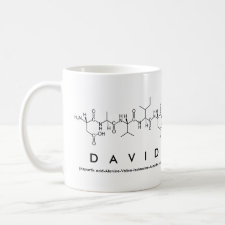
Authors: Simon R, Houck S, Spivak DA
Article Title: Comparison of particle size and flow rate optimization for chromatography using one-monomer molecularly imprinted polymers versus traditional non-covalent molecularly imprinted polymers.
Publication date: 2005
Journal: Analytica Chimica Acta
Volume: 542
Issue: (1)
Page numbers: 104-110.
DOI: 10.1016/j.aca.2005.03.048
Alternative URL: http://www.sciencedirect.com/science/article/B6TF4-4G1KWKT-5/2/f684b0d340a91499497351243c0e6e7a
Abstract: The dependence of enantio-selective chromatographic performance on particle size, as measured by separation factor, was investigated for one-monomer molecularly imprinted polymers (OMNiMIPs) compared to traditionally formed EGDMA/MAA molecularly imprinted polymers (MIPs). Five particle size ranges were compared (imprinted polymers. Other chromatographic parameters such as the number of theoretical plates and resolution exhibited only minor changes for the OMNiMIPs as the particle size changed, except for particles 20 μm and below. However, the number of theoretical plates and resolution for EGDMA/MAA are higher for particles in the 20-25 μm range. Thus, chromatographic factors for the EGDMA/MAA polymers are better in this range, despite better enantioselectivity for particle sizes above 25 μm. In contrast, OMNiMIPs generally show the most favorable performance for particle sizes in the 38-45 μm range. It was also found that decreasing flow rate resulted in improved enantioselectivity for both MIPs for all particle sizes
Template and target information: t-BOC-L-tyrosine
Author keywords: OMNiMIP, NOBE, Particle Size, Flow rate, performance



Join the Society for Molecular Imprinting

New items RSS feed
Sign-up for e-mail updates:
Choose between receiving an occasional newsletter or more frequent e-mail alerts.
Click here to go to the sign-up page.
Is your name elemental or peptidic? Enter your name and find out by clicking either of the buttons below!
Other products you may like:
 MIPdatabase
MIPdatabase









